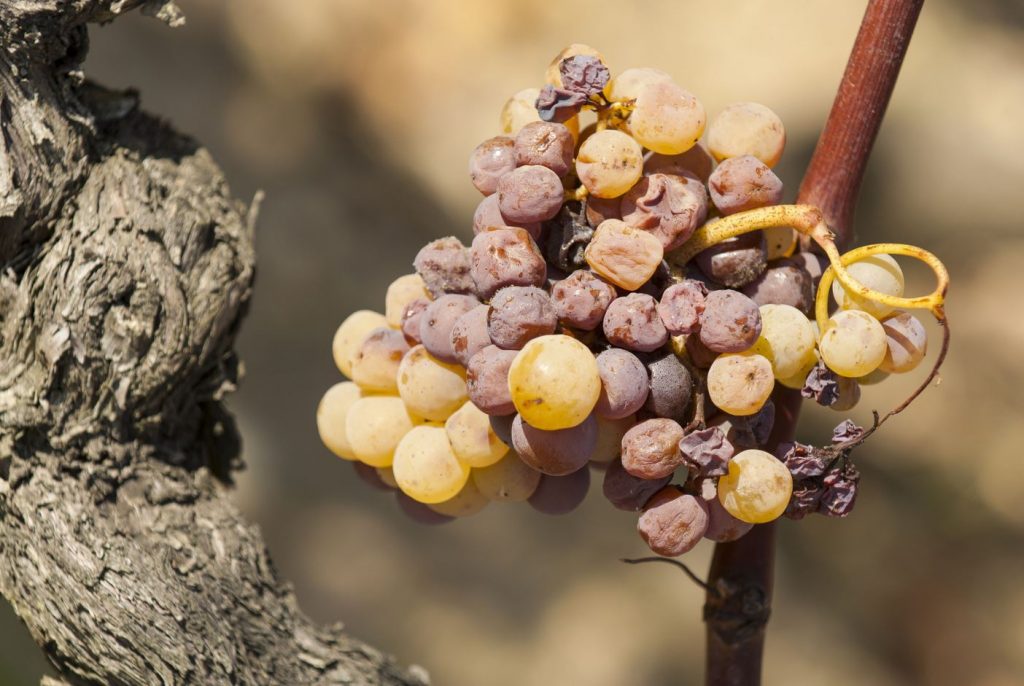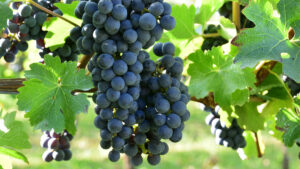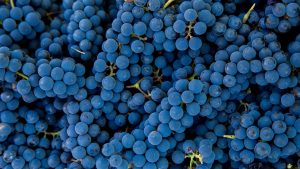
For several centuries, Alsatian Pinot Gris wines carried the name Tokay d’Alsace. Legend has it that during the Middles Ages, the grape variety was introduced to the region by Hungarian merchants who come across it in Burgundy (a mutation of Pinot Noir and in its native region, it goes by the name “Pinot Beurot”).
At the time, Hungarian Tokaj was one of the most sought-after wines on the market – as Louis XIV famously called it, “the wine of kings and the king of wines” – and the name Tokay was probably adopted so as to give more prestige to Alsatian wines. However, the grape variety Pinot Gris has no relation whatsoever to Furmint, Hárslevelű and Orémus, the traditional varieties used for Tokaji wine.
When Alsace was annexed by the German Empire in 1871, laws were put in place that were unfavourable to Alsatian wines. Between 1871 and 1918, the region’s official language was German, and Tokay was known as “Grauer Tokayer”. The end of World War I, however, saw Alsace rejoin France, and “Tokay d’Alsace” made a reappearance.
In 1984, the European Commission gave Hungary exclusive rights to the Tokay appellation, a law which was not fully applied until 2007 following a 30-year transitional period. From 1st January 1994, the term Tokay d’Alsace was forbidden, replaced first of all by “Tokay Pinot Gris”, and then on 1st January 2007, this became “Pinot Gris”.
In reality, this was the result of 80 years of negotiations between the two countries, as an initial bipartisan agreement was reached in 1926, stipulating that French labels stop using the “Tokay” denomination. This agreement had never been applied, but Hungary’s entry into the European Union was an opportunity to reopen the debate. And to better understand the legal issue at the heart of this quarrel, it’s worth noting that the reputation of Tokaj wines had declined during the 20th century. It was only from the 1980s, after the fall of the Iron Curtain and resulting investments from (mostly French) groups, that the vineyards of the Tokaj region reclaimed their position as one of the finest sweet wines in the world.
Pinot Gris: Fine wines of Alsace
The surface area of Pinot Gris planted in Alsace has increased significantly since the 1960s. In 1969, 387 hectares (4% of the total region’s vineyards) were planted with Pinot Gris, whereas in 2016, this figure increased to more than 2,387 hectares (15.4%). Classic Alsatian Pinot Gris are characterised by varietal characteristics, with smoky, autumnal notes, of mushrooms, white fruits and citrusy notes. Delicious when young, they reach their finest expression after some years of aging.
Given that iDealwine handles bottles that predate the changes in the law, you may have already seen Tokay on our labels of Alsace Pinot Gris.
See all Alsace Pinot Gris wines currently for sale on iDealwine
Tokaj, a gem of Hungary

With 5,500 hectares of vines to the north-east of Hungary, Tokaj is known for its sweet wines produced from grapes affected by noble rot. Six grape varieties are permitted in Tokaj wines: the star grapes are of course Furmint and Hárslevelű, with also Sárga Muskotály, Kövérszölö, and Zéta.
Legend has it that, in the early 17th century, Zsuzsanna Lórántffy (wife of Prince György Rákóczi I and owner of a plot of land in the region) and vineyard master László Máté Szepsi decided to postpone harvests in view of imminent invasion from the Turks. When they finally harvested the grapes, they were completely shriveled and botrytised (meaning that the fungus botrytis cinerea had infiltrated the grape skins causing ‘noble rot’ to form. They decided to use these grapes anyway, calling them aszú grapes, and Tokaji wine was born.
Interestingly, the Tokaj wine region is behind one of the first vineyard classification systems in the world. The 1700 classification organized vineyards into first, second and third growth with many of these vineyards being sought-after to this day. The most celebrated producers in the region are Disznókö, Oremus (run by the same winemakers who craft Vega Sicilia) and Hétszolo.
Tokaji’s primary characteristic comes from the fact that the grapes aren’t vinified immediately after harvest. The botrytised grapes – known as aszú grapes – are harvested over the course of several picking sessions in the vineyard. Stored elsewhere, they are then added to dry wine produced earlier in the season. This curious mix causes a second fermentation. The number of buckets of sweet botrytised grapes (known as puttonyos) added to each barrel determines its sugar concentration and the quality of the wine: three, four, five or six puttonyos, and finally the richest and most concentrated, aszu eszencia.
See our Tokaj wines currently for sale
What is the difference between Pinot Gris from Alsace and Tokaji from Hungary?
The two wines shared a name at one point = Tokay. Although there are a few similarities in the way both varieties ripen, they are distinctly different. Pinot Gris can be vinified dry all the way up to sweet, including Late Harvest (Vendanges Tardives) and Sélections de Grains Nobles. Hungarian Tokaji is generally a sweet wine, made in minute quantities from botrytised grapes harvested one at a time.
Alsace Pinot Gris is marked by its variety’s characteristics of smoky notes and autumnal hints (mushrooms), sweet spices (cinnamon, clove, ginger), white-fleshed fruit, tropical fruits and lemon aromas. It can be enjoyed while young but gains with age. The grapes can be made into a single-varietal wine or blend with other regional ‘noble varieties’ such as Gewurztraminer, Muscat and Riesling. Its flavours change depending on how the wine is crafted.
On the other hand, Tokaji wine which comes from the Tokay wine region is created from different local varieties mentioned above. Highly concentrated in sugar and flavours, the wine is adorned with an incredible natural acidity which bring balance, persistence, freshness and immense ageing potential. It has notes of honey, stewed fruits, tropical fruits, dried fruits (raisins, dried apricots, dates…), vanilla, sweet spices, marmalade and citrus peel. The texture on the palate is smooth, ample and persistent.



